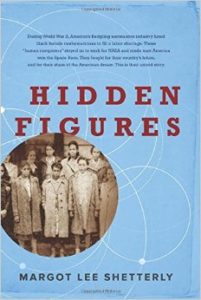Shared Roots Project: Ohio Looks at Oppression in a Different Way
This is a guest blog post from Lynn Bilal, Prevention Coordinator, Ohio Alliance to End Sexual Violence.
Author, bell hooks calls for looking at the interconnectedness of themes related to oppression. She asks us to consider each form of oppression as part of a larger system, rather than separately. Inspired by April’s PreventConnect webinar, the Ohio Alliance to End Sexual Violence working with the Ohio Department of Health (ODH) decided to create a quarterly social justice reading resource with action steps. The quarterly e-mail was designed to help ODH funded rape prevention and crisis intervention programs with their ongoing cultural competency professional development. The Shared Roots Project’s purpose is to help Ohioans in the sexual assault and interpersonal violence movement identify how different forms of oppression are connected and provide ways to practice, talk and share this information with colleagues, friends and family.
In January, we invite you to join us in this conversation. The focus this quarter is on learning more about the “the story of the unseen and nearly forgotten black women who worked at the Langley Research Center in Hampton, Virginia — the National Aeronautics and Space Administration’s first field center, circa World War II. In the 1940s, these female scientists and mathematicians were the human computers behind some of the biggest advancements in aeronautics.” Specifically, you are called to identify the intersections between these African American women’s experiences and the sexual violence and interpersonal violence movement.
We are asking everyone to 1) take the time and see the movie Hidden Figures. Set in the civil rights era and space race era, the film addresses racial and gender barriers. The movie will be in national theaters across the country, January 6; and 2) complete an action step. The movie can be viewed alone or done with a group (i.e., family, friends or staff outing). One idea would be to bring it to a staff meeting for discussion.
Personal Action:
Action 1: Questions to think about or discuss at a staff meeting obtained from Margot Lee Shetterly’s book Hidden Figures, YA Edition.
- What does this job mean for Dorothy in terms of social mobility?
- From what we know so far, in what ways do Dorothy and Katherine’s experiences mirror each other? In what ways are they different?
- How does the civil rights movement take shape during this time period?
- Are the women who become “girl computers” held to
 a higher standard? Do they hold themselves to one? Why or why not?
a higher standard? Do they hold themselves to one? Why or why not? - How do the racial problems in the United States in the 1940s and 1950s change the perception of the U.S. abroad? How is this used as propaganda by the Soviet Union?
- How was the fight for social equality affecting education? How would those practices affect Langley recruitment? In what ways is Mary’s transition to engineer significant?
- What impact, if any did the Soviets having engineering schools dominated by women play-out in American press, especially in papers like the Washington Post?
Additional Questions:
- How is gender bias portrayed in the movie?
- How is racism portrayed the movie?
- Do you think the movie portrayed sexual harassment accurately?
Action 2: Have a conversation with someone outside the sexual violence & interpersonal violence movement (e.g., family member, friend). This movie will be viewed nationally and can provide an opportunity to have a conversation about racism, gender bias and sexual harassment portrayed in the movie.
- Start a conversation with one of the above questions. “Wow did you see that movie…”
- Start the conversation about women in the sciences today (see below for material).
Action 3: Read About the Bias against Women of Color in Science
- These Shocking Charts Show How Hard It Is for Black Women in Science (2015) https://
 mic.com/articles/122185/stem-black-women#.Phgu9FA62
mic.com/articles/122185/stem-black-women#.Phgu9FA62
- Double Jeopardy Report: Gender Bias for Women of Color in Science (2014)
Action 4: See How Sexual Harassment Looks in the Sciences
- She Wanted to Do Her Research. He Wanted to Talk ‘Feelings.’ (2016) http://www.nytimes.com/2016/03/06/opinion/sunday/she-wanted-to-do-her-research-he-wanted-to-talk-feelings.html
- How Sexual Harassment Halts Science (2016) http://www.slate.com/articles/health_and_science/science/2016/07/sexual_harassment_has_devastating_consequences_on_victims_ability_to_perform.html
- How Women Are Harassed Out of Science (2016) http://www.theatlantic.com/science/archive
/2016/07/how-women-are-harassed-out-of-science/492521/
- Female Scientists Harassed Out of the Lab (2016) CNN – http://www.cnn.com/videos/us/2016/09/30/female-scientists-sexual-harassment-ganim-pkg-lead.cnn
- Addressing sexual harassment in the science, engineering, and medical workplaces Workshop Summary (2016) http://sites.nationalacademies.org/PGA/cwsem/PGA_173087
Action 5: Try out the interactive map showing the number of women researchers by country internationally http://www.uis.unesco.org/_LAYOUTS/UNESCO/women-in-science/index.html#overview!lang=en®ion=40535
Share:
- Share an article on OSIP Social Justice Pinterest.
- Share a reflection on sa-Ohio and/or Ohio_Prevents.
- Start a conversation about what you learned with a co-worker or a friend.
Additional Resources
- Learn about the Associate of Women in the Sciences
- 17 Black Women in Science and Tech You Should Know http://www.theroot.com/photos/_17_black_women_in_science_and_tech_you_should_know/#slide-18
- Know Your IX
- American Association of University Women
- Black Women Game Changers (2015) http://www.forharriet.com/2015/04/9-black-women-game-changers-in-stem.html#axzz4OxBWsoHk
To learn more about the ODH RPE project’s cultural competencies requirements and how they are encouraged to use these resources, or to be put on a quarterly e-mail list, contact Beth Malchus-Stafa, Ohio Department of Health, beth.malchus@odh.ohio.gov.

